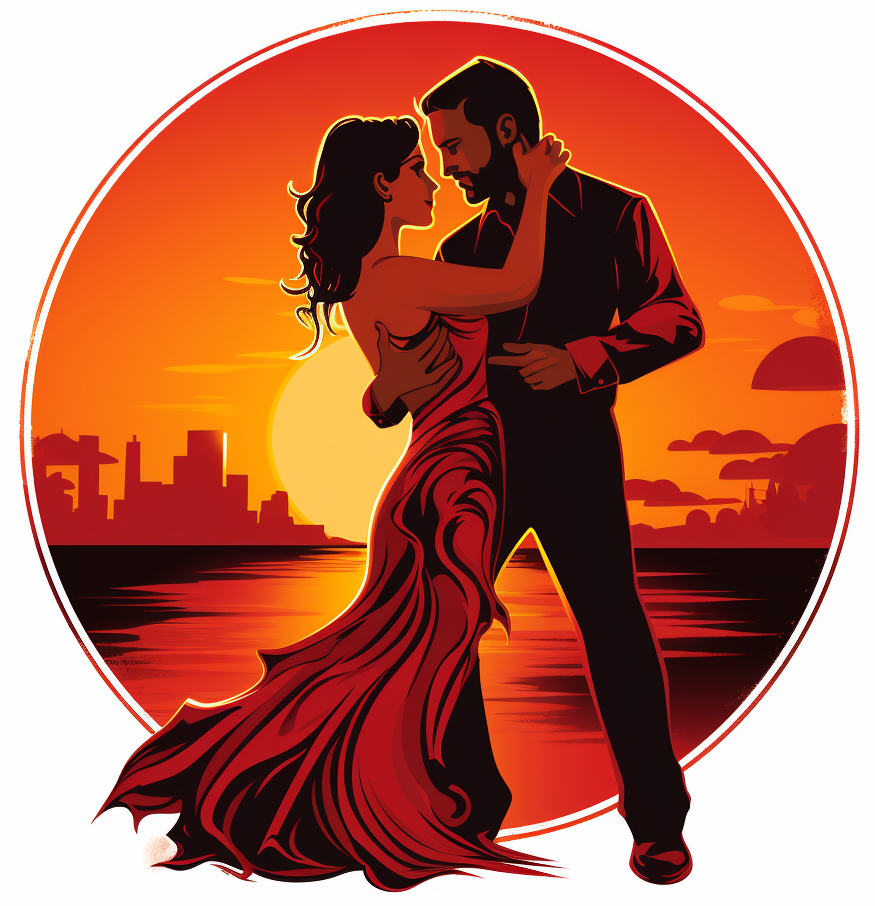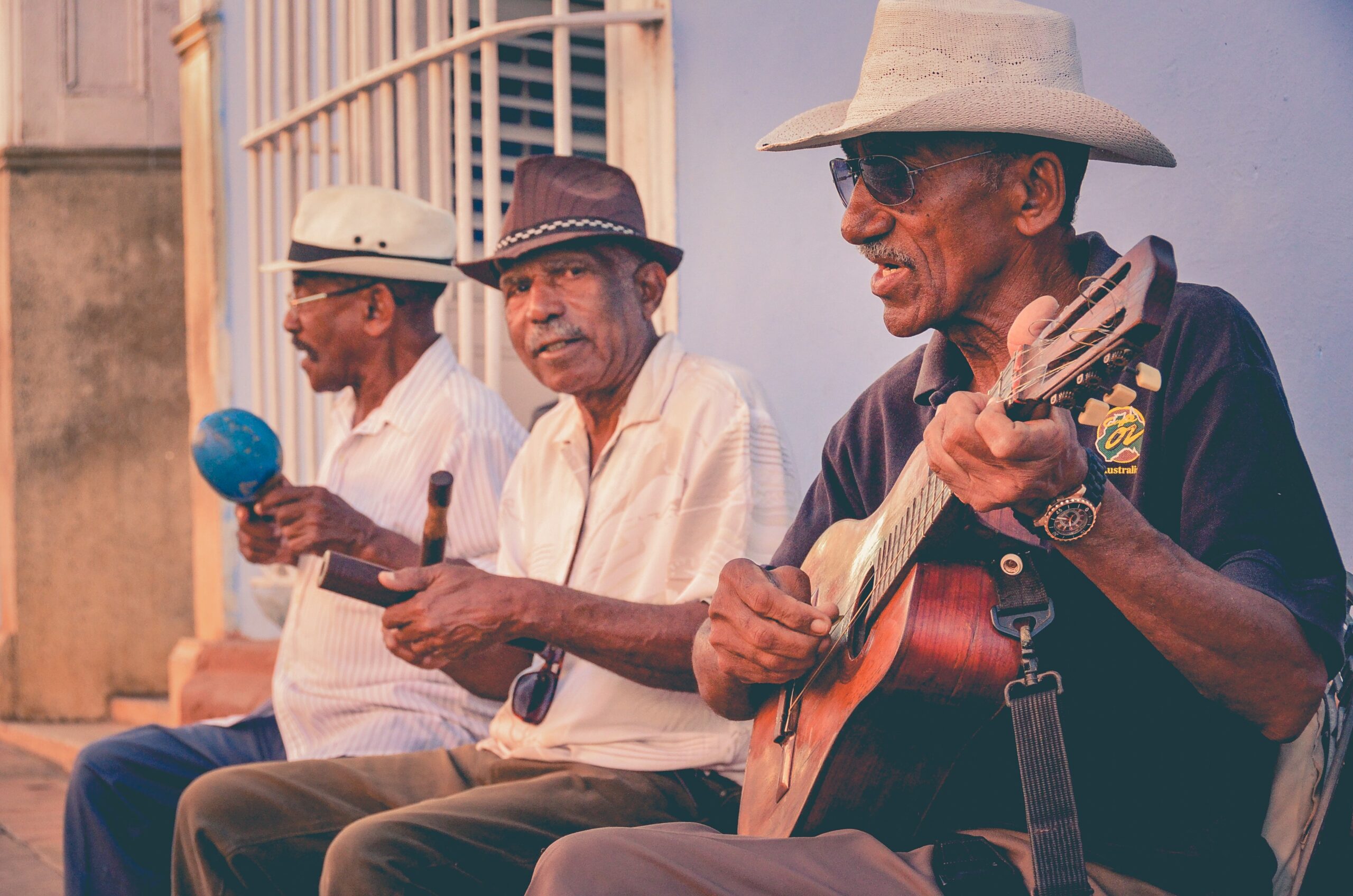What instruments are used in salsa?
Salsa music is renowned for its dynamic ensemble of instruments, contributing to its lively, layered sound. At the heart of the rhythm section are the congas, timbales, and bongos, percussion instruments that drive the complex rhythms synonymous with salsa. The claves, a pair of wooden sticks, play a crucial role in establishing the rhythmic pattern, the ‘clave’ beat, essential to salsa music. The piano and bass provide the harmonic structure, often implementing ‘montuno’ patterns that complement the percussion. Brass instruments, like the trumpet and trombone, are used to play the melody and improvisational solos, adding depth and vigor to the music. Occasionally, salsa arrangements may incorporate other instruments, such as the guitar, violin, or flute, each adding a unique flavor. Thus, the instruments used in salsa music create a vibrant sonic tapestry, each contributing to the genre’s irresistible rhythm and rich musical texture.
What defines salsa music?
Salsa music is defined by its compelling rhythms, melodic complexity, and vibrant instrumentation, all of which contribute to its distinctive and energetic sound. Central to salsa music is the ‘clave’, a rhythmic pattern that serves as a foundational element around which the rest of the composition is built. This pattern, typically played on claves (a pair of wooden sticks), sets the rhythmic framework and often dictates the arrangement of melodic elements.
The instrumentation of salsa is typically diverse, encompassing a range of percussion, brass, and string instruments. Congas, timbales, and bongos provide rhythmic drive, while brass instruments such as trumpets and trombones offer melodic lines and improvisational flourishes. Piano and bass add harmonic depth, often using a repetitive rhythmic pattern known as ‘montuno’.
Lyrically, salsa songs often tell vivid stories, capturing diverse themes from romance to social issues. Ultimately, what defines salsa music is its ability to merge these components into a cohesive, engaging musical expression, rich in cultural resonance and universally appealing in its energy.
What is clave?
In salsa music, the “clave” rhythm is usually a pattern of five beats over two measures of 4/4 time. The pattern is typically divided into a “three-two” or a “two-three” sequence.
In a “three-two” sequence, the first measure of the clave consists of three beats, usually struck on the counts of 1, 2.5, and 4. The second measure consists of two beats, typically falling on counts 2 and 3.5.
On the other hand, in a “two-three” clave, the pattern is reversed. The first measure consists of two beats, struck on counts 2 and 3.5, while the second measure consists of three beats, falling on counts 1, 2.5, and 4.
This rhythm is the underlying pulse of salsa music, around which all other melodic and harmonic elements are structured. Understanding the placement of the clave beats is crucial for musicians and dancers alike to follow and express the rhythm of salsa music accurately.
Is salsa music fast or slow?
Salsa music can vary widely in tempo, encompassing both fast, energetic tracks and slower, more romantic pieces. The tempo is typically influenced by the specific style of salsa and the intended mood of the song.
Fast-paced salsa songs, often associated with styles like Colombian salsa, are known for their rapid, intricate rhythms, which inspire lively, energetic dance movements. “La Rebelión” by Joe Arroyo and “A La Memoria Del Muerto” by Fruko Y Sus Tesos are examples of faster salsa tracks that invigorate listeners and dancers alike with their vibrant tempo.
On the other hand, slower salsa songs, often found in the Salsa Romantica style, feature a more relaxed tempo and are typically characterized by their emotive, romantic lyrics. Tracks like “Hasta Que Te Conocí” by Marc Anthony and “Que Alguien Me Diga” by Gilberto Santa Rosa offer a mellower, soulful interpretation of salsa.
This variability in tempo contributes to the versatility and rich expressive potential of salsa music.
What tempo is salsa music in?
Salsa music is typically characterized by its upbeat tempo, usually ranging from about 150 to 250 beats per minute (BPM). However, the tempo can vary widely depending on the style and mood of the piece. For example, Salsa Romantica, with its smoother and more romantic feel, often features slower tempos, perhaps around 70-100 BPM. On the other hand, faster styles like Colombian salsa can reach up to 250 BPM or more, driving the energetic and intricate dance patterns associated with this style. Regardless of the specific tempo, the rhythm of salsa music always invites movement and dance.
How to dance to salsa music?
Dancing to salsa music is a captivating experience that requires rhythm, coordination, and a fundamental understanding of its characteristic steps. Salsa dance is typically characterized by a pattern of six steps danced over eight counts of music, with a pause on the fourth and eighth counts. The basic step involves stepping forward or backward – starting with the left foot for the leader (typically the man), and the right foot for the follower (usually the woman).
Salsa dance incorporates a wide variety of turns, spins, and patterns, and is danced in a slot or line (similar to dancing along a narrow lane). Partners maintain a connection through a firm but flexible hold, facilitating swift movements and turns. Body movement, especially in the hips, is also a crucial element, creating a fluid, graceful aesthetic that complements the vibrant salsa rhythms.
While there are different styles, like Cuban or “Casino” style, Puerto Rican style, and LA style, the essence of salsa dancing lies in its energetic, passionate expression, closely following the rhythm and spirit of the music. Whether you’re a beginner or a seasoned dancer, the joy of salsa dance lies in the connection with your partner, the music, and the rhythm.
Famous salsa musicians
Salsa music has been graced by numerous gifted musicians who have left an indelible mark on the genre. One of the most influential figures is Hector Lavoe, known as ‘The Voice’, whose poignant lyrics and unique vocal style have earned him legendary status. Rubén Blades, a Panamanian singer-songwriter, is renowned for his socially conscious lyrics and for integrating a range of musical styles into his salsa.
Celia Cruz, ‘The Queen of Salsa’, is revered for her powerful voice and dynamic performances. She has played a pivotal role in bringing salsa to a global audience. Willie Colón, a musician and social activist, has been instrumental in the development of salsa, especially the New York style.
Other notable musicians include Eddie Palmieri, known for his innovative use of the piano, and Marc Anthony, who has been instrumental in popularizing salsa romantica. These artists and many others have shaped the rich and vibrant tapestry of salsa music.


